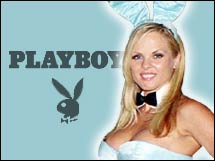NEW YORK (CNN/Money) -
Playboy is making a return to the nightclub scene, 18 years after shuttering the last legendary Playboy Clubs.
 |
|
| Playboy Enterprises plans to open a nightclub in Las Vegas. |
Playboy Enterprises Inc. (PLA: Research, Estimates) said Wednesday it has partnered with the Palms Casino Resort and the Nine Group to develop and operate a Playboy-theme nightclub in Las Vegas.
The new club will be located in an expansion currently under construction at the Palms hotel, off the Vegas Strip on Flamingo Road, Playboy spokesman Bill Farley told CNN/Money.
But the new club won't be called The Playboy Club, he explained. "It will be more like a dance club," Farley said, instead of the Playboy Club back in the '70s and '80s that featured adult jazz and cabaret entertainment.
Farley said the company hasn't decided on the name of the new club.
The club is expected to open in early 2006. It would be staffed by waitresses wearing some version of the traditional bunny costumes, including pointy ears and fluffy tails, he said.
"We will create provocative experiences that will be unique, not just in Las Vegas but in the gaming industry," George Maloof, president of the Palms Casino Resort, said in the statement.
The first Playboy Club opened in 1960 and enjoyed a rapid expansion throughout the '60s and '70s. The last clubs in New York City, Chicago and Los Angeles closed in 1986, Farley told CNN/Money.
So far, Playboy has no plans to open more clubs beyond the one in Las Vegas.
 |
YOUR E-MAIL ALERTS
|
Follow the news that matters to you. Create your own alert to be notified on topics you're interested in.
Or, visit Popular Alerts for suggestions.
|
|
|
Over the years, Playboy magazine has seen itself being squeezed from both the spread of hard-core pornography on the Internet and on videos, as well as from the growth of so-called lad magazines, such as FHM and Maxim, which feature barely clothed women in provocative poses.
The magazine, still Playboy's core operation, has seen circulation slide to about 3.1 million, down from its peak 7 million in 1972, according to the Wall Street Journal.
The company posted losses in 2000 through 2002, although it essentially broke even in 2003. Analysts surveyed by earnings tracker Thomson First Call forecast that it would earn 2 cents a share in 2004.

|

